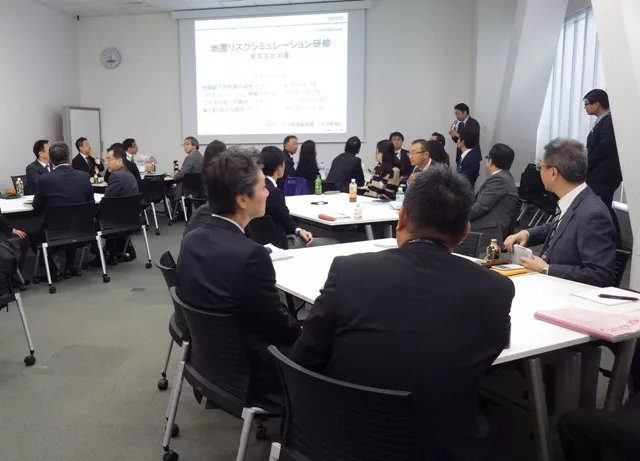 Real-time risk simulations
Real-time risk simulations
To improve our prevention and response capabilities to major risks, we have been carrying out practical risk simulations targeting all workplaces, including overseas.
Especially when a disaster occurs, flexible decision-making and execution in response to the disaster situation that change by the minute are required. On the occasion of the Great East Japan Earthquake we introduced the Real-time Risk Simulation utilizing a mock disaster exercise in FY 2011, and finished the training for all our business sites. In addition, we conducted the Management Risk Response Simulation for Directors and Division General Managers with the theme of the Tokyo metropolitan area shattered by an earthquake. In the simulation, we shared the direction for business continuity with the participants reviewing "what to do when it occurs" against unforeseeable management risks in advance and recognized that Directors and General Managers of Divisions themselves make prompt decisions when a disaster occurred. Subsequently, we are continuing the training especially in the areas where the Metropolitan Area Earthquakes or the Nankai Megathrust Earthquakes would affect. Outside Japan, we have been conducting risk simulations while changing sites and themes. The total number of the trainings from FY 2005 to the previous fiscal year was more than 170 times.

